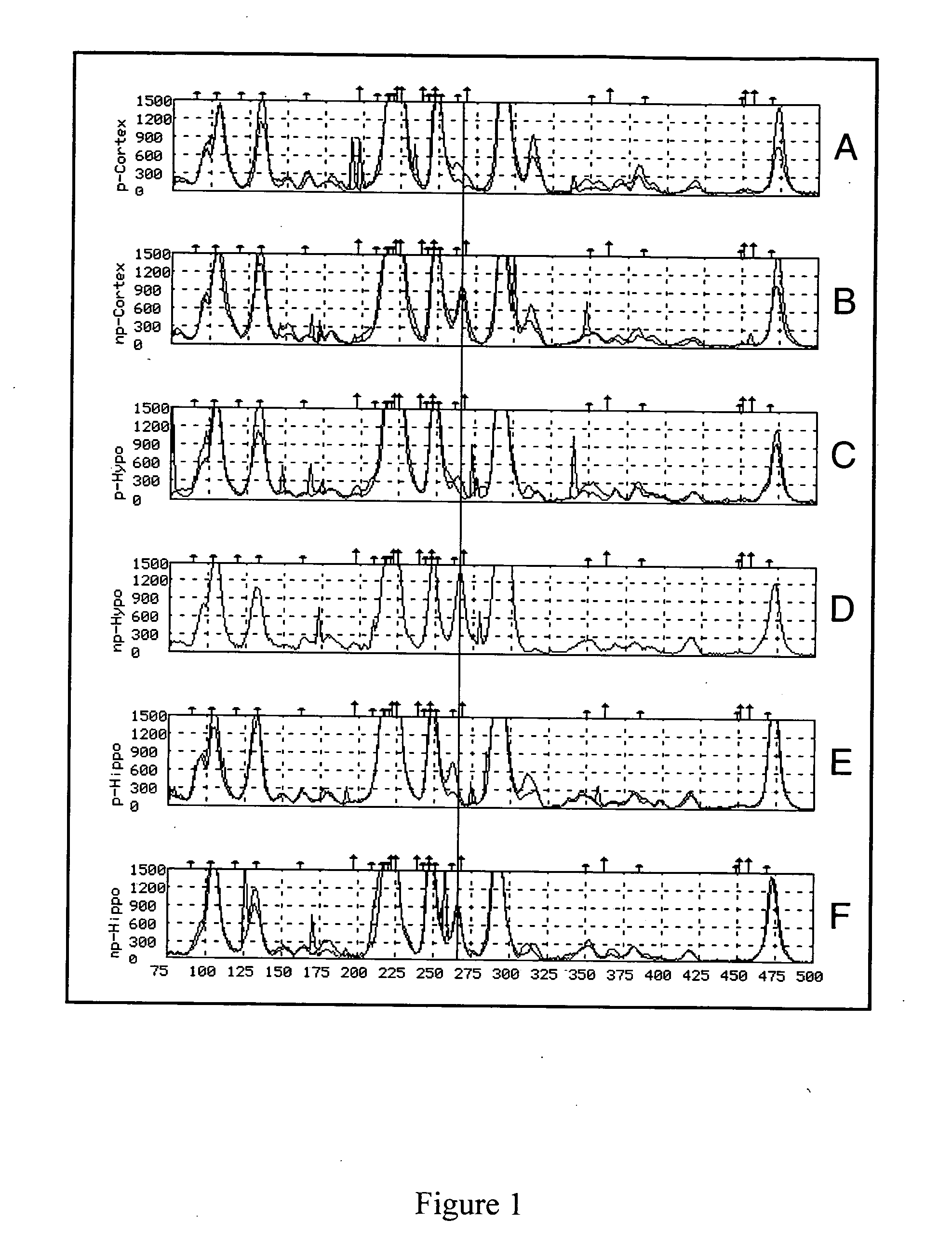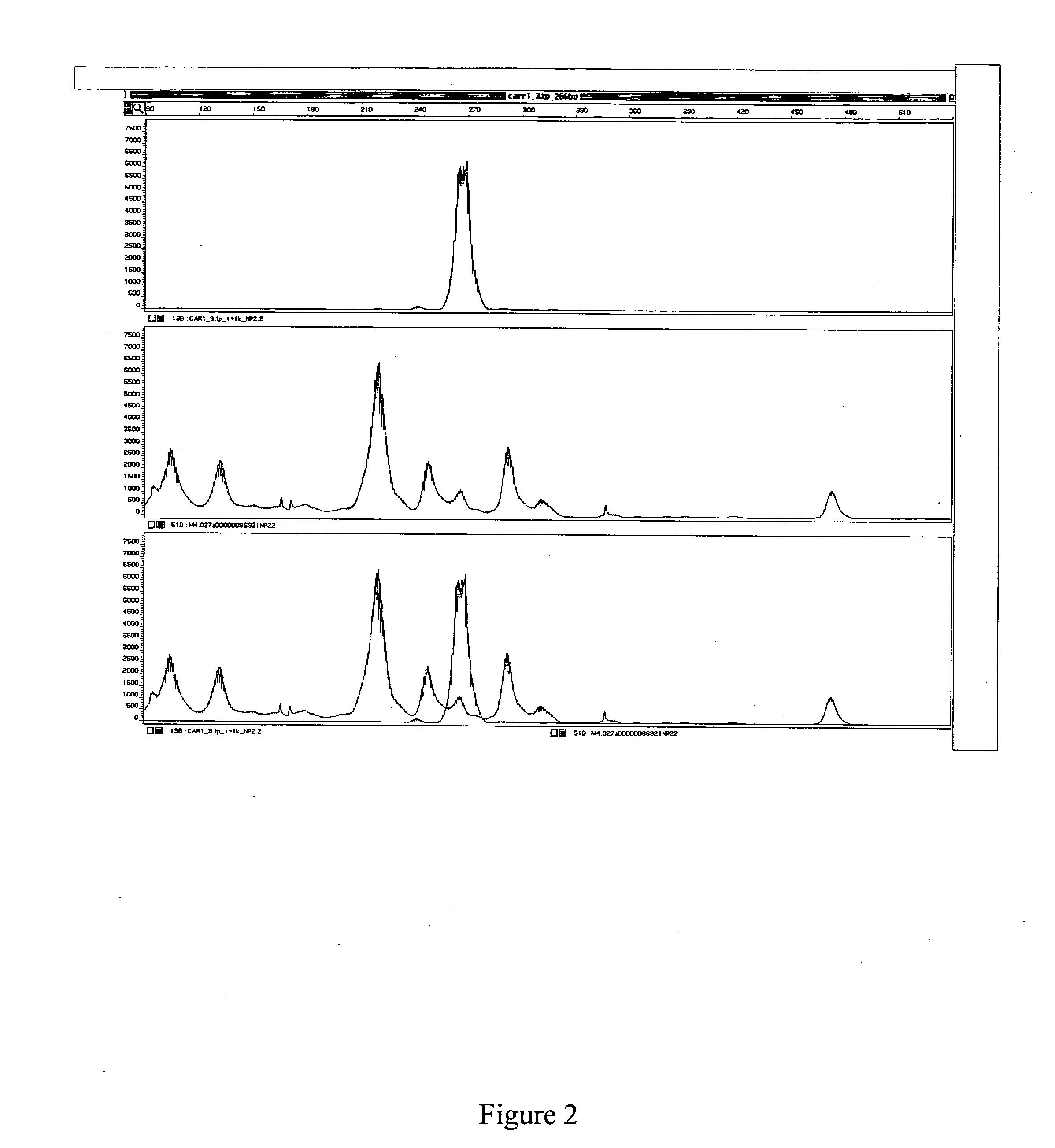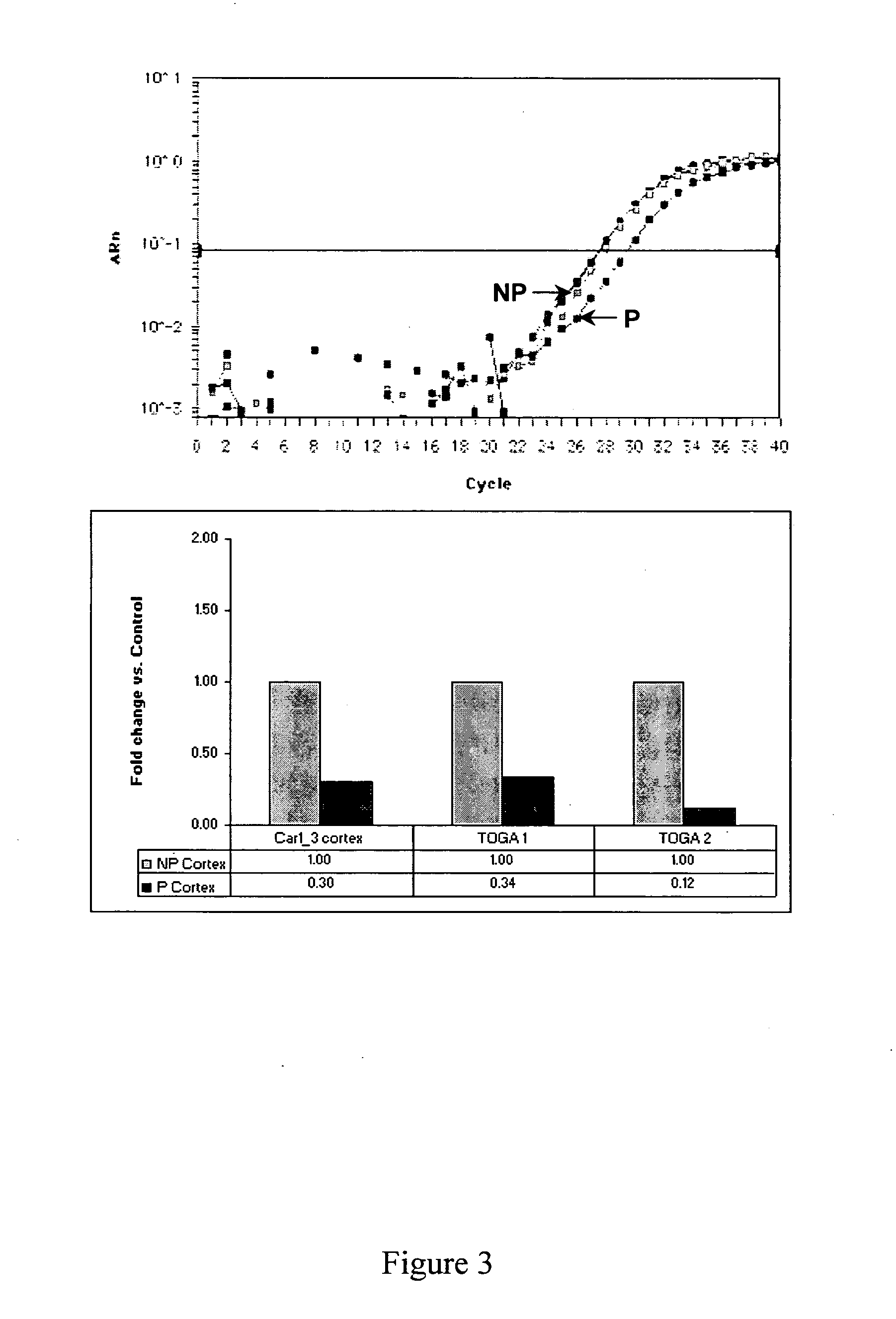Gene expression and genetic changes implicated in alcoholism
a technology of gene expression and alcoholism, applied in the field of gene expression and genetic changes implicated in alcoholism, can solve the problems of reducing the risk of coronary heart disease, affecting the primary source of alcohol metabolism, and a large number of medical problems, so as to prevent alcoholism, increase the level of intact polypeptide products, and increase the expression of polynucleotide or genes.
- Summary
- Abstract
- Description
- Claims
- Application Information
AI Technical Summary
Benefits of technology
Problems solved by technology
Method used
Image
Examples
example 1
Identification of Genes Regulated in Alcoholism
[0238] To identify genes that are differentially expressed in alcohol-preferring as compared to alcohol-non-preferring rats, mRNA from 4 specific brain regions was analyzed using TOGA®. Once the regulated genes were identified, several analyses were conducted. The regulated gene products from the alcohol-preferring and alcohol-non-preferring rats were sequenced and compared to identify polymorphisms that might contribute the to differential gene expression. The regulated DSTs were localized to specific brain regions by in situ hybridization. The DSTs were mapped to determine whether they localize to a specific QTL associated with alcohol seeking behavior. The protein expression levels of the regulated DSTs were determined to verify that the difference in gene expression corresponded to a difference in protein expression.
example 2
Generation of Alcohol Inbred Preferring and Alcohol Inbred Non-Preferring Rats
[0239] Alcohol inbred preferring and alcohol inbred non-preferring rats were generated by selectively breeding animals for a particular phenotypic trait and then, in some cases, completing many generations of brother-sister mating to produce highly inbred strains with the phenotype of interest. The alcohol-preferring (P) and alcohol-non-preferring (NP) rat lines were developed at Indiana University for high and low alcohol preference behavior through bidirectional selective breeding from a randomly bred closed colony of Wistar rats (Wrm: WRC(WI)BR) from the Walter Reed Army Institute of Research, Washington, D.C. (Li et al, 1991). Following successful divergence and plateau of the phenotype in each of the selected lines, brother-sister mating was initiated at generation 30 of selection to develop inbred lines. At 31 generations of inbreeding, 10 alcohol-naïve inbred male P rats and 10 alcohol-naïve inbred...
example 3
Micro-Dissection-and Isolation of Specific Brain Regions
[0240] Entire brains were removed from sacrificed rats. The brain tissue was micro-dissected to obtain 4 sub-region samples: 1) hypothalamus, 2) hippocampus, 3) caudate-putamen, nucleus accumbens and olfactory tubercles, and 4) prefrontal-, frontal- and parietal-cortex. Micro-dissection was conducted as follows: 1) the hypothalamus was removed by pinching off the sub-region (measuring approximately 4 mm×4 mm×2 mm) from the ventral (base) surface of the brain using a pair of curved tweezers; 2) the olfactory tubercles were removed from the very rostral extent of the brain by pinching off the tissue (measuring approximately 2 mm×2 mm×3 mm) with forceps proximal to the attachment point of the olfactory bulbs; 3) the hippocampus was removed by rolling the cortical hemispheres forward from the cerebellar attachment site, and then gently teasing the CA1, CA2 and CA3 regions from the base of the exposed cortex under-layer; 4) the cau...
PUM
| Property | Measurement | Unit |
|---|---|---|
| Fraction | aaaaa | aaaaa |
| Fraction | aaaaa | aaaaa |
| Fraction | aaaaa | aaaaa |
Abstract
Description
Claims
Application Information
 Login to View More
Login to View More - R&D
- Intellectual Property
- Life Sciences
- Materials
- Tech Scout
- Unparalleled Data Quality
- Higher Quality Content
- 60% Fewer Hallucinations
Browse by: Latest US Patents, China's latest patents, Technical Efficacy Thesaurus, Application Domain, Technology Topic, Popular Technical Reports.
© 2025 PatSnap. All rights reserved.Legal|Privacy policy|Modern Slavery Act Transparency Statement|Sitemap|About US| Contact US: help@patsnap.com



